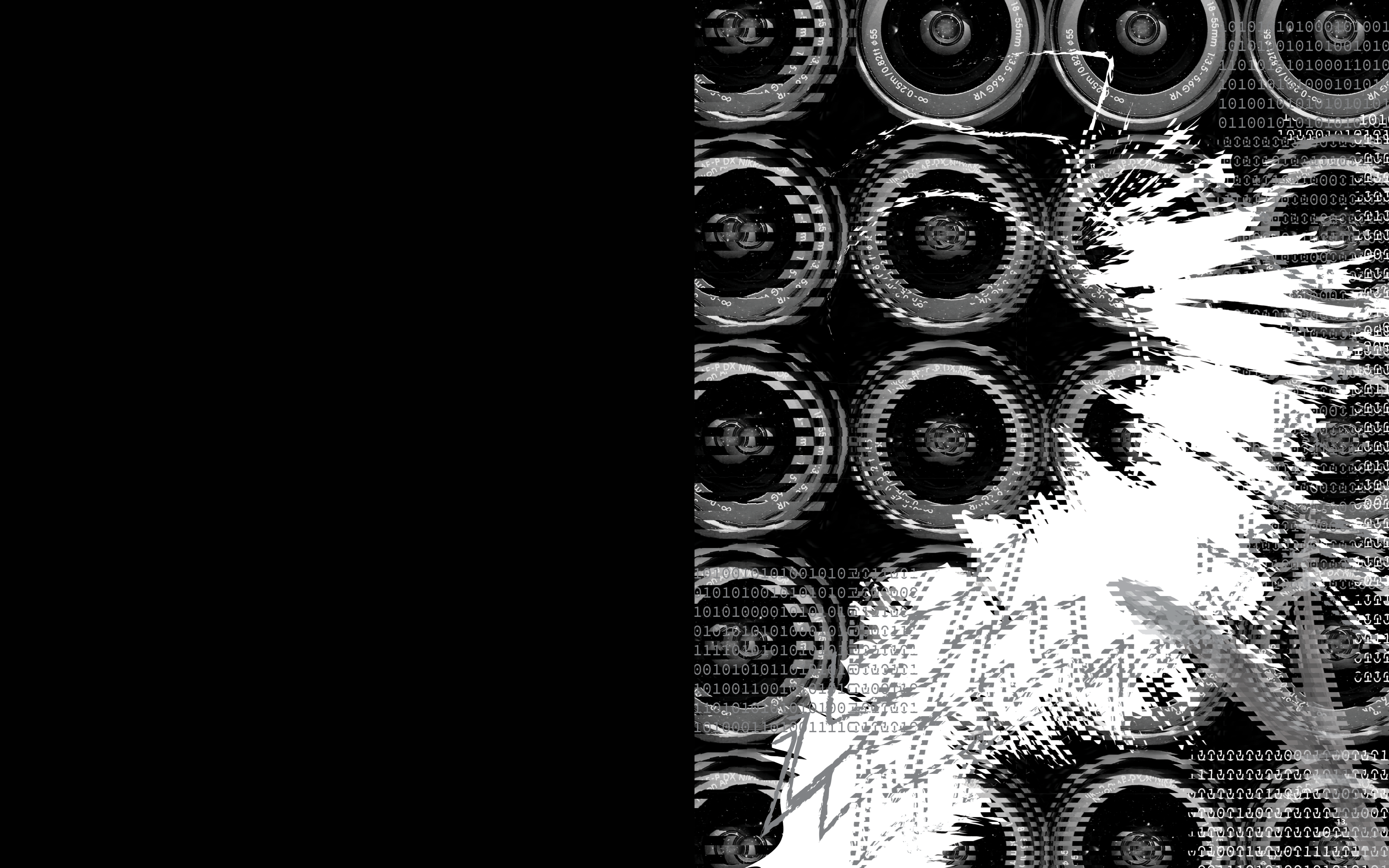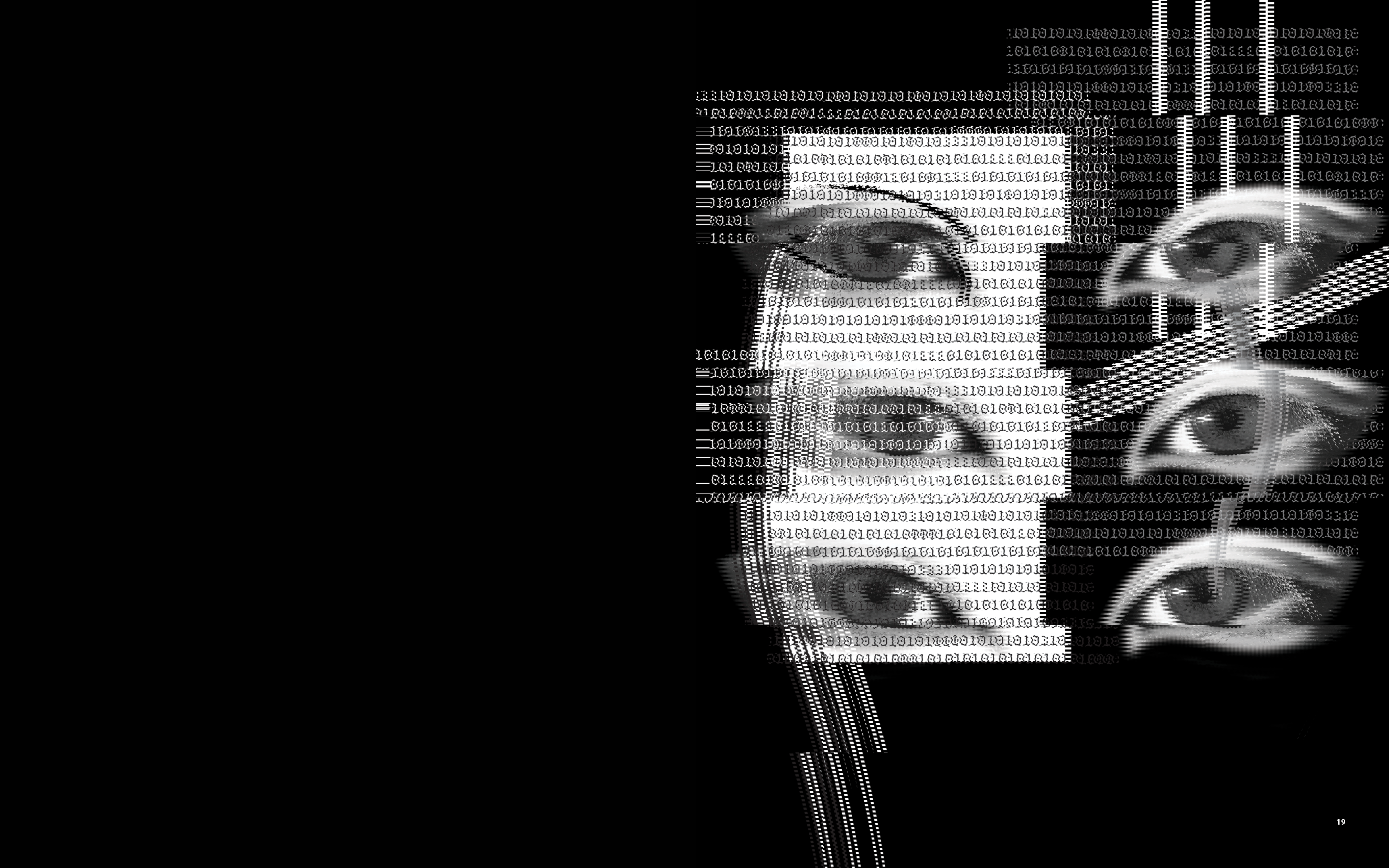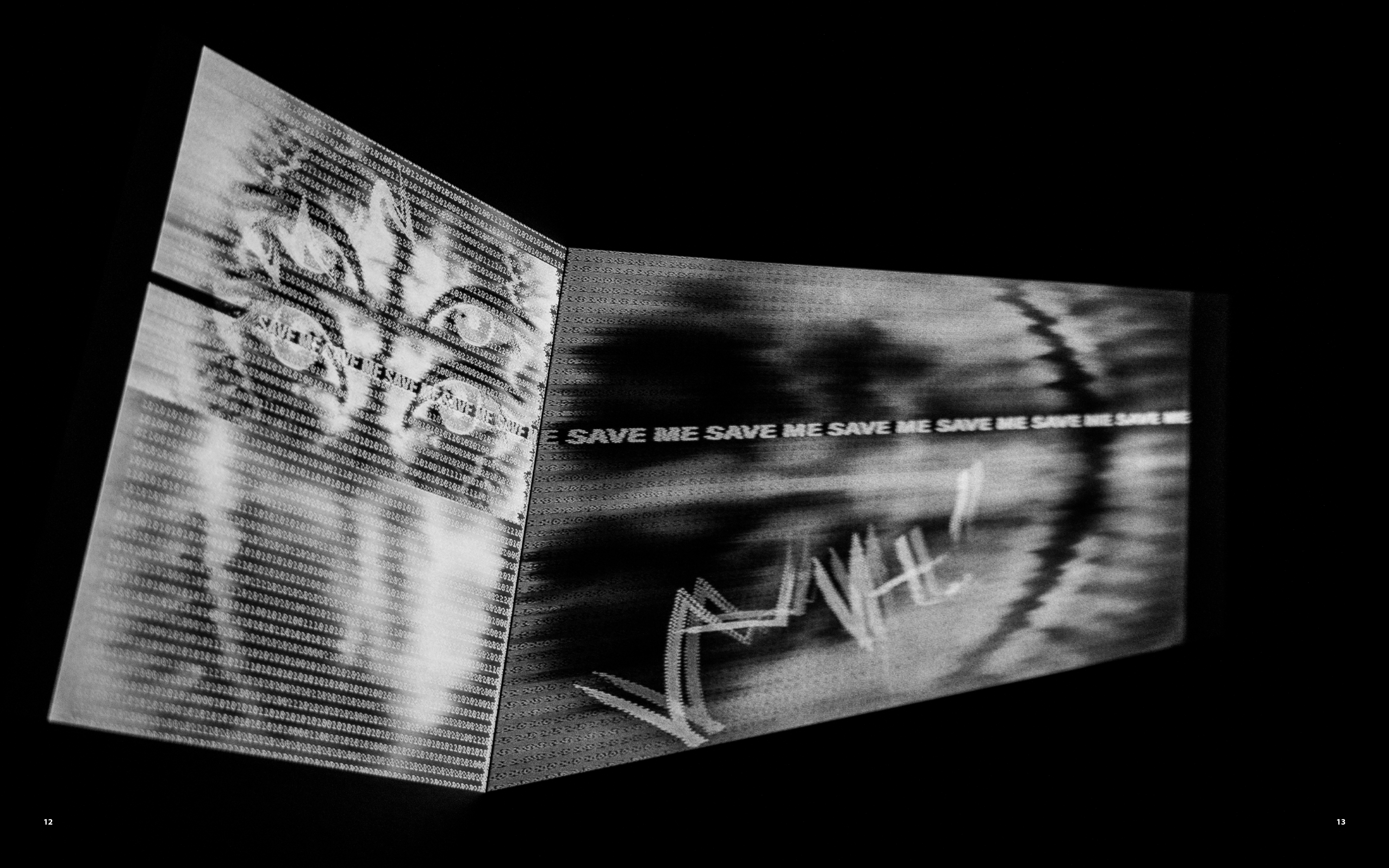















Toxicity of Social Media Volume 1, 2018
Adobe Illustrator / Adobe Photoshop / Adobe InDesign
“Toxicity of Social Media” is a 2-volume graphic and typographic narrative that emulates the dark side of the digital realm, focusing on a malicious environment characterized by information overload and an invasion of privacy. As a result, both of the booklets were designed to be highly chaotic, confusing, and difficult for the viewer to navigate through.

Both of the booklets were designed to play on the viewer’s emotions and instill viewer with an uncomfortable feeling. The eye fatigue produced by the bright glaring digital screens was also recreated through the use of a high gloss paper.
As a result, the viewer would have a difficult time trying to enjoy the overwhelming compositions within the two booklets for an extended period of time. In essence, the entire booklet is the whole experience itself, rather than solely the compositions themselves.
As a result, the viewer would have a difficult time trying to enjoy the overwhelming compositions within the two booklets for an extended period of time. In essence, the entire booklet is the whole experience itself, rather than solely the compositions themselves.
















Toxicity of Social Media Volume 2, 2019
Adobe Illustrator / Adobe Photoshop / Adobe InDesign / Projection / Photography
Although the typographic narrative may appear similar to the graphic narrative in terms of chaoticness, the typographic narrative instills a sense of emptiness and loneliness within the viewer despite the overwhelming visual compositions. This signifies that despite the information overload, all the mindless internet surfing is not adding much substance to our daily lives.
Coded Adaptation of “Toxicity of Social Media”, 2021
Processing
This is a screen recording of what would happen if the user interacts with the sketch on Processing.
WARNING: This video contains flashing images which may not be suitable for people with photosensitive epilepsy.
The coded adaptation of “Toxicity of Social Media” allows the users to take part in the project, rather than merely viewing already-made overwhelming static compositions within the two booklets.
As the user increasingly interacts with the coded sketch, the sketch becomes more through the movement of the mouse, mouse clicks, and/or the pressing of the keyboard keys. This new level of interaction brings an entirely new experience for the user, because the user inputs immediately affect the outputs that appear within the sketch.
However, this coded adaptation is not a replacement of the original two-volume graphic and typographic booklets. Instead, the two-volume static booklets and the dynamic coded adaptation effectively work together to evoke a strong emotional impact within the viewer and/or user.
As the user increasingly interacts with the coded sketch, the sketch becomes more through the movement of the mouse, mouse clicks, and/or the pressing of the keyboard keys. This new level of interaction brings an entirely new experience for the user, because the user inputs immediately affect the outputs that appear within the sketch.
However, this coded adaptation is not a replacement of the original two-volume graphic and typographic booklets. Instead, the two-volume static booklets and the dynamic coded adaptation effectively work together to evoke a strong emotional impact within the viewer and/or user.